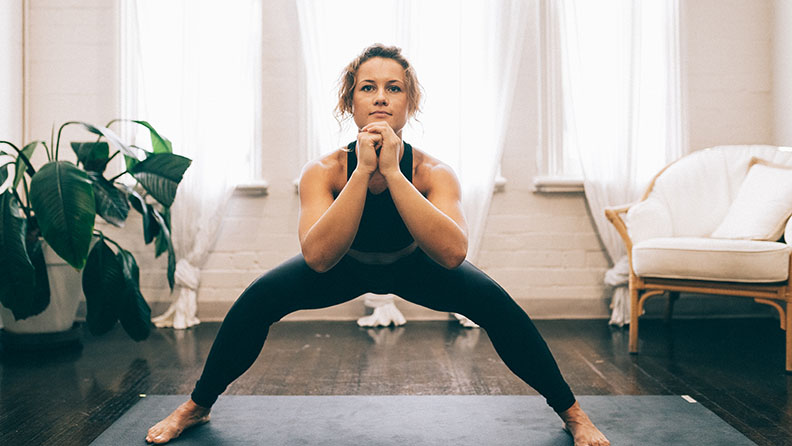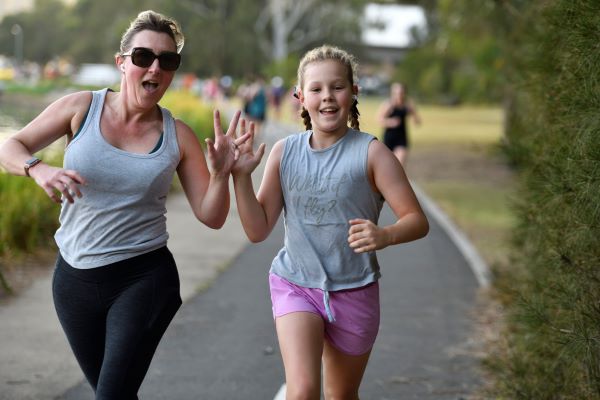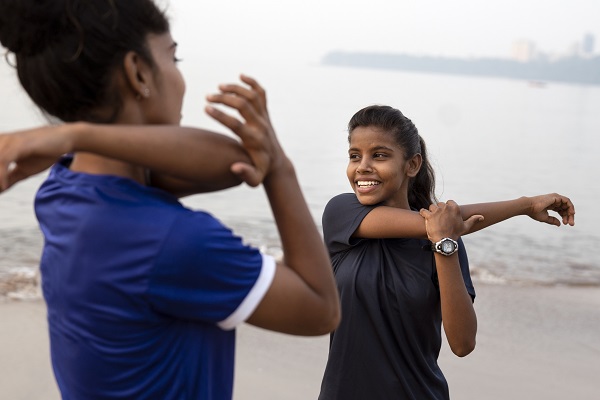-
Some children naturally gravitate towards team sports and it becomes a treasured part of their childhood. But this isn’t the only way to get your kids moving – there are loads of activities to choose from – martial arts, tennis, swimming, riding a bike to school…the list goes on!
And by sticking to a few simple guidelines, your kids can stay safe:
Encourage them to play a range of sports
Injuries can often come about from overuse (think tennis elbow and shin splints) and this is more likely to happen if your child is playing only one sport. These injuries can also lead to complications like osteoarthritis later in life; so it’s really important to encourage your kids to play a range of sports. This should also stop things from becoming too serious, as fun should be the name of the game at this point.
Warm up, cool down and stretch
A solid warm up is pivotal to helping prevent injury. It literally increases the temperature of the body, and ups the heart and breathing rate. Any warm up exercises should start at low intensity and gradually build to the intensity required for the main event.
Just as important is the cool down. This needs to be an activity that’s markedly reduced in intensity, like a light jog or walk. And 5 minutes of stretching right at the end is the recommended way to finish.
Take weather conditions into account
The weather will affect how your child copes with playing sport or exercising. No matter what the temperature, you should ensure they’re well-hydrated before they start playing, and that they continue to drink water throughout and afterwards. If it’s a hot day, make sure your child is protected from the sun and if they complain of feeling unwell, take them off the ground.
How demanding is your kid’s schedule?
Youngsters who show particular promise in one, or multiple sports are likely to have a packed sporting schedule. That’s why it’s so important to communicate with their coaches and teachers to avoid injury and burnout.
MORE: Find winter exercise inspiration here
Sideline when your instincts tell you to
The sooner an injury is diagnosed, the more effectively it can be treated and your child can return to playing.
If your child is experiencing sharp, stabbing pain, they should stop what they’re doing right away. If they play through pain, they risk making the injury worse. You should seek medical attention for your child immediately if:
- they are bleeding
- their joints are swelling
- they can’t put weight on the affected limb
- they feel dizzy or nauseous.
Safe exercise tips for your young ones

-
Stretches for gym enthusiasts
8 stretches to help you cool down from workouts
-
Stretches for office workers
Stretch out your back and relieve stress
-
Stretches for runners
Stretch your legs, hips and back after a long run
-
How to walk 10,000 steps
Discover how to easily reach your goal of 10,000 steps daily.
-
Everything you need to know about parkrun
Been wondering what a parkrun looks like? Where do you go? What do you do? How do you sign up? Find out here.
-
Five ways to exercise when on a budget
You don’t need to spend money on gym memberships just to meet your fitness goals. Here are five free ways to stay healthy and active when you’re living on a budget.
Subscribe to receive the best from Live Better every week. Healthy recipes, exercise tips and activities, offers and promotions – everything to help you eat, move and feel better.
By clicking sign up I understand and agree to Medibank's privacy policy






